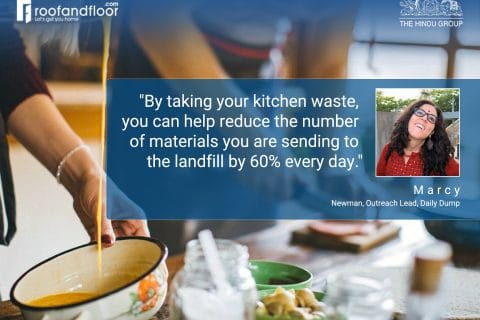It is often told that “home is not a place, it’s a feeling.” Indeed! After months of due diligence and years of waiting, the satisfaction that a homebuyer gets while taking possession of his home cannot be explained in words.
So, you too are going to be a proud homeowner soon. Congratulations! While you may have read about the necessary documents and may have done multiple site visits before buying a property, it is important to be doubly sure about everything. Now, this may look like one big task but trust us when we say it is going to be very smooth with RoofandFloor’s simple checklist.
For the sake of simplicity, let’s classify the checklist into two broad categories –the paperwork and things to check the project and your home.
Let’s begin with the paperwork!
Before taking the possession, make sure all your documents are well in place. Check if you have received the original documents and photocopies of all the requisite documents from the builder. Take our ready list with you when you go for taking the keys.
Encumbrance certificate (EC): This EC document ensures that the property is free from any monetary and legal liabilities.
Commencement certificate: This is issued to the builder by the designated authority after the specifications in the Intimation of Disapproval (IOD) are fulfilled.
No objection certificate: A NOC acts as written proof that the project has received all the required approvals from the concerned departments before starting the construction. These include BESCOM/BWSSB, clearance from the fire department, etc.
Occupancy certificate (OC): Issued by the civic authority of the city. Occupancy certificate signifies that the construction of the project is in compliance with the approved plan and building laws.
Completion certificate: This states that the project has been constructed as per the required norms and regulations.
Khata: This legal document contains all particulars about a property like name of the owner, location, and size of the building.
Joint development agreement: Needed if more than one person is responsible for the development of the project.
Building plan approval: This states that the building structure has been approved by the local authority. Without this, your building will be an illegal construction.
Allotment letter: Issued by the builder in case you have opted for a home loan. You will have to give this to your bank and is needed to release the remaining funds.
Letter of no dues from the builder: Issued once all payments have been made.

Apart from these, you would need to have the following as well:
Others: Registered deed of conveyance, land-use certificate/conversion order, details of electricity, water and power backup, agreement by maintenance agency, and car parking allotment and details.
Receipts of property tax+transfer certificate: In case you have opted for a resale property, you will need receipts of the property tax paid by the owner, and transfer certificate.
And that’s it! Now that we’ve covered the paperwork, let’s take a look at the things you must check within the project and your apartment.
Amenities: Remember all those amenities the builder promised in the glossy brochure? Take a detailed tour of all of them, from the clubhouse to swimming pool to the jogging track, and check if everything is in place. It may happen that some of these may be delayed, or are not in a usable condition at the time of possession. In such a scenario, it is advisable to ask the builder about the timelines of these amenities.
Fittings: The fittings include the switchboards, door knobs, bathroom fittings, etc. You must check whether the builder is providing the same or equivalent brand as mentioned by him earlier.
Doors and windows Ensure that all the doors and windows are as per the unit plan. Check the quality of the doors and the windows. Also, ensure that all doors and windows are opening and closing smoothly as well as have proper latching in them.
Paint: Check the quality of paint used on the walls, windows, grills, and railings. Also, ensure that everything has a double coat of paint.
Look for cracks: A hole or crack in the wall is very popular after possession, so inspect properly. If you discover such damages after taking the keys, the builder can refuse to fix it.
Drainage outlets: Nobody wants clogged outlets in their home. Hence, it is advisable that you check all drainage outlets in bathrooms, kitchen, utility area, etc.
Check for leakages: It is also imperative to check the taps and other faucets for leakages. Make sure that there are no leakages while opening or closing taps. Check if the kitchen sink and all the washbasins are properly installed.
Electrical fittings: Check if all switches and plug-points are working properly. In case of an inverter, ensure the supply shift to the inverter as soon as the main power supply is cut. Lastly, see if the miniature circuit breaker (MCB) is of good quality.
Size of the rooms: Do not hesitate to take the measuring tape and actually measure the size of each room, doors, and windows. Ensure that everything is as per the Sale Agreement.
The keys: Lastly, make sure to take at least two sets of keys from the builders and check all the locks properly before you sign off on the completion of the possession.
With our detailed checklist, your property possession will be smooth and hassle-free. You can also take a look at our checklist for site visits here. Do share your experiences with us in the comment box.





